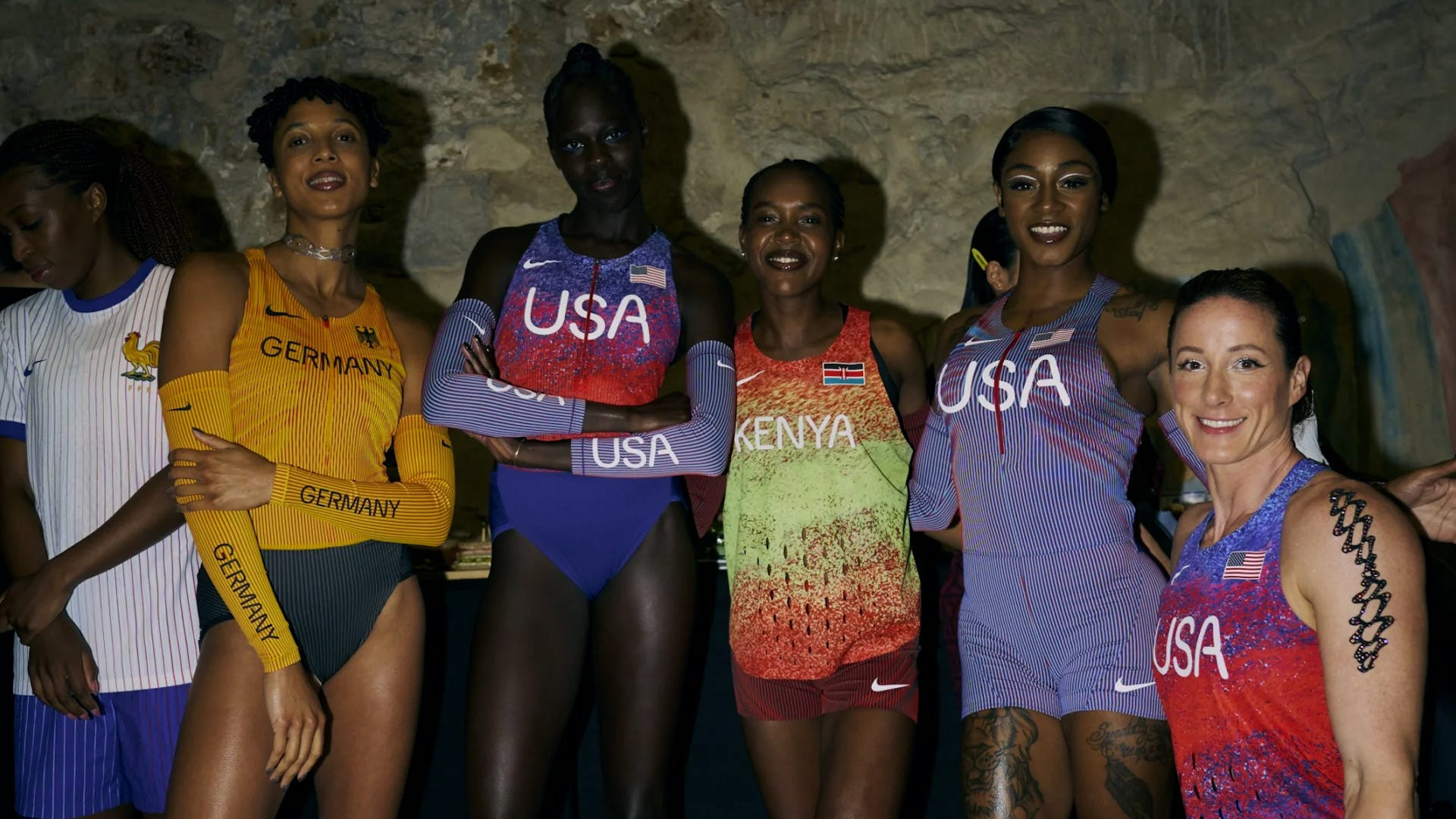Nike’s unveiling of the track and field uniforms for Team USA at the upcoming 2024 Paris Olympics has ignited a significant online stir. While designed with athlete performance in mind, the designs, particularly the women’s kit, have drawn criticism for being overly revealing, sparking a debate about athlete choice and appropriate attire in sports.
 Nike's track and field Olympic uniforms cause controversy
Nike's track and field Olympic uniforms cause controversy
The controversy began when Citius Magazine, a well-regarded running publication, shared the first glimpse of the Nike Olympic Track Uniforms 2024. The image featured a women’s uniform – a high-cut, blue and red leotard emblazoned with “USA.” Social media platforms quickly became a forum for discussion, with thousands of comments flooding in, largely criticizing the design as too skimpy and impractical for elite athletic competition.
Prominent voices in the track and field community, including Olympic pole vaulter Katie Moon and former track and field athlete Lauren Fleshman, joined the conversation, further amplifying the debate. The core of the criticism centered around the perceived impracticality and potential objectification of the women’s uniform design.
Nike Defends Olympic Uniform Design Amidst Criticism
In response to the growing wave of online criticism, Nike directed inquiries to an official article detailing the design philosophy behind the Olympic track uniforms 2024. The company asserted that these uniforms represent their “most athlete-informed, data-driven and visually unified” designs to date. Nike emphasized that the collection was inspired by the unique identities and diverse communities represented by each participating nation and sport.
According to Nike, a primary objective was to prioritize athlete voices, creating uniforms that catered to their needs for “choice, comfort, and performance.” John Hoke, Nike’s chief innovation officer, stated that the Paris 2024 track and field kits were designed to offer athletes a comprehensive range of silhouettes tailored to various disciplines, body types, and sizes, with a focus on maximizing performance and breathability.
Nike highlights the extensive variety within the Olympic track uniforms 2024 collection, boasting nearly 50 unique options for both men and women. This range includes the now-controversial leotard, alongside more traditional shorts and briefs. The company underscores that athletes will have the autonomy to select outfits or combinations that best align with their personal style and preferences.
Track and field athlete Anna Cockrell offered a supportive perspective, stating in a news release, “I’ve had the opportunity to share feedback and insights that helped inform the new USATF Kit. During testing, this fit allowed me to move freely and without distraction, and I love how the look represents Team USA.”
Athlete Reactions: A Spectrum of Opinions on Olympic Uniforms 2024
Despite Nike’s emphasis on athlete input, many athletes voiced strong criticism of the Olympic track uniforms 2024, particularly the women’s leotard design. Queen Harrison Claye’s humorous comment, suggesting a sponsorship from a waxing service, encapsulated the sentiment that the design seemed to prioritize aesthetics over athletic functionality.
Jaleen Roberts raised concerns about practicality, pointing out that the revealing nature of the uniform could be particularly problematic during dynamic movements in track and field events. Angello Malefakis echoed a wider sentiment of disappointment, questioning if Nike’s design represented the best they could offer female athletes, implying a sense of gender disparity in uniform design.
Lauren Fleshman’s critique was particularly pointed, arguing that the women’s kits seemed to be designed for visual appeal rather than performance enhancement. She challenged the notion that such a design would be enthusiastically embraced in other women’s professional sports leagues and characterized the uniform as a “costume born of patriarchal forces,” suggesting it prioritized attracting viewers to women’s sports through objectification rather than celebrating athletic achievement.
Counterarguments: Athlete Choice and Performance Considerations
However, not all athlete voices were critical. Runner Sinclaire Johnson dismissed the online backlash, assuring that the uniform bottoms appear different on athletes than on mannequins. She highlighted that athletes were involved in the testing process for the Olympic track uniforms 2024 and implied that the online reaction was an overreaction to a static image.
Katie Moon further defended the designs and athlete choice, emphasizing the wide array of uniform combinations available to athletes – at least 20 different options, including tops and bottoms. She explicitly stated that athletes even have the option to choose men’s styles if preferred. Moon personally expressed a preference for less fabric in hot and sweaty competition conditions, arguing for athlete autonomy in uniform selection. She concluded that athletes should be supported in choosing whatever they feel most comfortable and perform best in, whether it be a more revealing style or a more conservative one.
Navigating the Uniform Debate: Performance, Preference, and Perception
The controversy surrounding the Olympic track uniforms 2024 highlights the complex intersection of performance, personal preference, and public perception in athletic wear. While Nike emphasizes athlete choice and performance-driven design, critics raise valid concerns about potential objectification and the practicalities of the more revealing styles. Ultimately, the availability of diverse options within the Olympic track uniforms 2024 collection, as highlighted by Nike and athletes like Moon, suggests an attempt to cater to varied athlete needs and preferences. The ongoing discussion underscores the importance of continued dialogue about appropriate and empowering athletic apparel for women in sports, ensuring that uniforms serve athletes’ performance and comfort while respecting their autonomy and representation.

